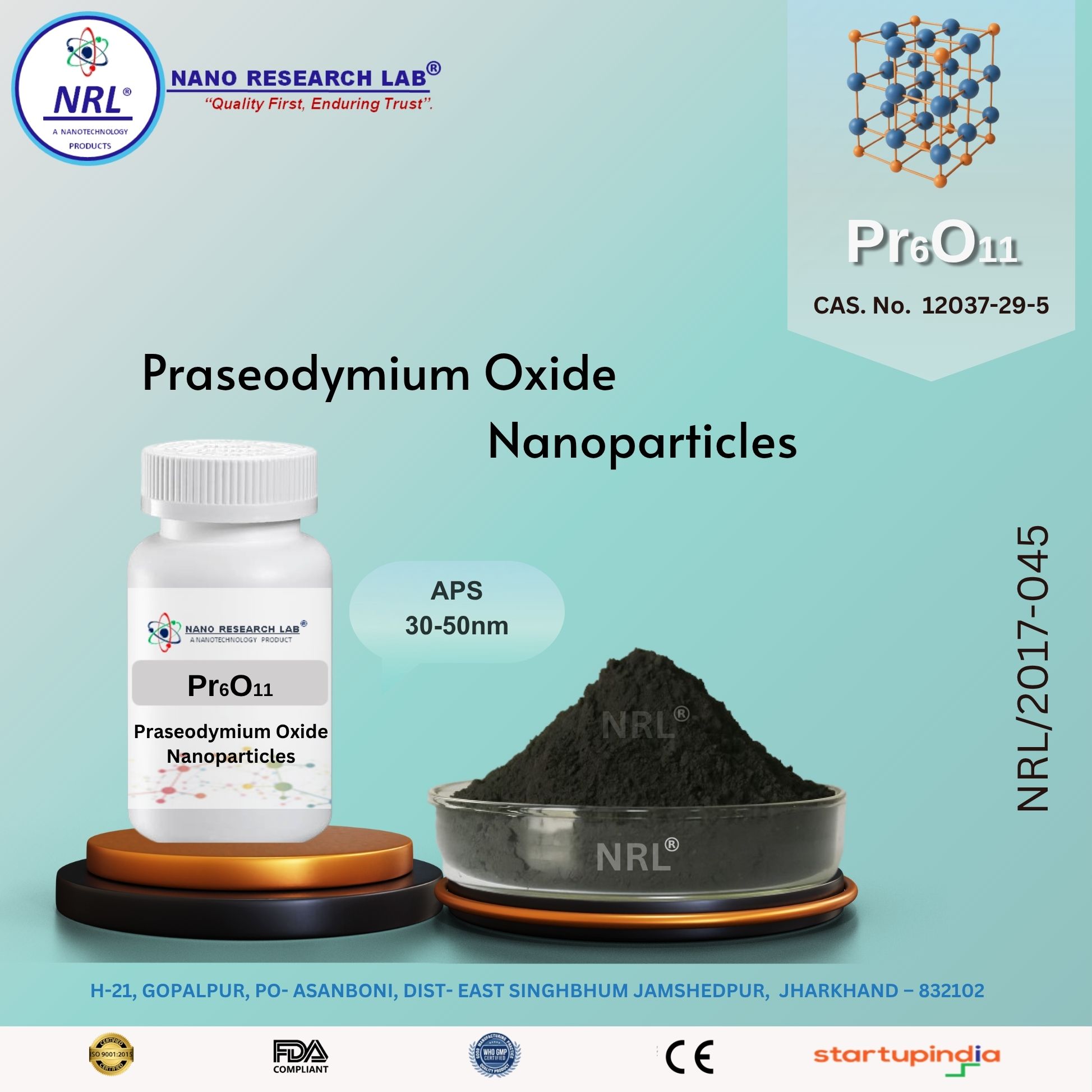
Praseodymium Oxide Nanopowder/Nanopowder (Pr6O11, 30-50nm, Purity 99.5%)
₹4490.00
Praseodymium Oxide Nanoparticles / Nanopowder (Pr₆O₁₁, 30–50 nm, Purity 99.5%)
⚙️ Technical Specifications
Property | Specification |
|---|---|
Product Name | Praseodymium Oxide Nanoparticles / Nanopowder |
Chemical Formula | Pr₆O₁₁ |
Purity | ≥ 99.5% |
Particle Size | 30–50 nm |
Appearance | Yellow to light green fine powder |
Crystal Structure | Cubic / Fluorite-type |
Density | 6.77 g/cm³ |
Melting Point | ~2,350°C |
Solubility | Insoluble in water, soluble in acids |
Morphology | Spherical / polycrystalline nanoparticles |
CAS Number | 12037-29-5 |
🌟 Key Features
High purity (≥99.5%) with controlled nano-size (30–50 nm)
Excellent magnetic, optical, and catalytic properties
Thermally and chemically stable
High surface area for improved reactivity
Easy to disperse in solvents, polymers, ceramics, and composites
Ideal for magnets, lasers, electronics, and advanced materials
🔬 Applications (in Detail)
1. Permanent Magnets
Pr₆O₁₁ nanoparticles are used in high-strength rare-earth magnets (Pr-Fe-B).
Applied in electric motors, generators, and magnetic sensors.
2. Optics & Lasers
Used in solid-state lasers, optical amplifiers, and glass due to strong praseodymium emission.
Enhances color, refractive index, and optical properties of specialty glasses and ceramics.
3. Ceramics & Glass
Acts as a dopant to improve color, thermal stability, and UV resistance in ceramics and glass.
Used in yellow-tinted glasses, laser glass, and high-performance ceramics.
4. Electronics
Incorporated in semiconductors, capacitors, and electronic components to improve magnetic or optical performance.
Useful in high-frequency, optoelectronic, and miniaturized devices.
5. Catalysis
Acts as a catalyst in oxidation reactions, organic transformations, and environmental remediation.
Useful in green chemistry and energy conversion applications.
6. Research & Advanced Materials
Widely used in nanotechnology, photonics, and rare-earth material research.
Incorporated into composites, coatings, and functional materials for enhanced performance.
